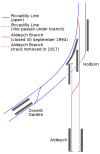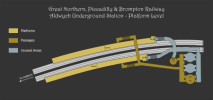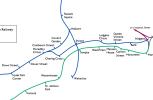Hi everyone,
I am new to learning about the London Underground system so excuse any incorrect info. I am a masters student looking to base a project in the disused Aldwych Station, and wondering if anyone could help me clear up a few queries.
Information says there are two platforms; one was closed a long time ago and the other relatively more recently. These were both on the Picadilly line, seemingly both to and from Holborn?
However I have found a map that indicates an operational picadilly line running what i think is beneath the tunnels of Aldwych?
Is this correct? And if it is, why would they not have used the tunnels through Aldwych and simply bypassed the station, if it is on the Picadilly line.
I have attached some of the maps i have used to inform these questions.
Thank you to anyone kind enough to help!



I am new to learning about the London Underground system so excuse any incorrect info. I am a masters student looking to base a project in the disused Aldwych Station, and wondering if anyone could help me clear up a few queries.
Information says there are two platforms; one was closed a long time ago and the other relatively more recently. These were both on the Picadilly line, seemingly both to and from Holborn?
However I have found a map that indicates an operational picadilly line running what i think is beneath the tunnels of Aldwych?
Is this correct? And if it is, why would they not have used the tunnels through Aldwych and simply bypassed the station, if it is on the Picadilly line.
I have attached some of the maps i have used to inform these questions.
Thank you to anyone kind enough to help!




